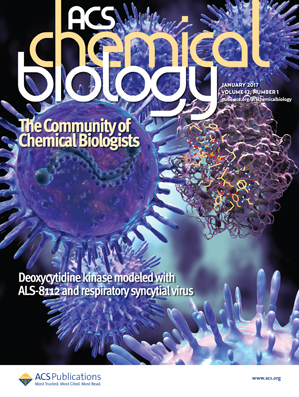使用空白微球的低剂量化疗加低剂量伦伐替尼和微波消融治疗大块(≥7 厘米)不可切除肝细胞癌患者的改良经动脉化疗栓塞术的前瞻性单臂 2 期研究:TALEM 试验
IF 3.5
2区 生物学
Q2 BIOCHEMISTRY & MOLECULAR BIOLOGY
引用次数: 0
摘要
简介:对于大面积不可切除肝细胞癌(HCC)患者,传统经动脉化疗栓塞术(cTACE)的疗效仍不理想。本研究探讨了使用空白微球低剂量化疗(BMS-TACE)加低剂量来伐替尼(LD-LEN)和微波消融(MWA)的改良TACE在大块无法切除的HCC患者中的疗效和安全性。研究方法在这项前瞻性、单臂、2期研究中,超过达标标准、肿瘤最大直径≥7厘米、无大血管侵犯或肝外转移的不可切除HCC患者接受了初始BMS-TACE(利碘多、低剂量多柔比星、洛巴铂各最多30毫克,以及空白微球;大多数患者随后进行了修改和重复)+低剂量来伐替尼(LD-LEN,4-8毫克/天)和微波消融。主要终点是降期率 (DSR);次要终点是客观反应率 (ORR)、无进展生存期 (PFS)、总生存期 (OS) 和不良事件。研究结果2019年11月至2022年3月,43名患者入组。中位随访时间为 21.2 个月。最大肿瘤直径中位数为 11.2 厘米(四分位数间距 [IQR],7-25)。BMS-TACE和LD-LEN治疗后,37例(86.0%)患者发生了降期,其中32例患者接受了MWA治疗,8例患者在未接受MWA治疗的情况下获得了完全反应(CR)。ORR为93.0%(32例[74.4%]患者有CR,8例[18.6%]患者有部分反应)。1年、2年和3年的PFS率分别为57.5%、25.9%和18.1%(中位PFS为14.7个月[95% CI:8.1-19.5])。1年、2年和3年的OS率分别为85.8%、67.7%和61.6%(中位OS为36.4个月[95% CI:26.8-未达标])。BMS-TACE 治疗后,观察到 CD11b+/CD33+/HLA-DR- 髓源性抑制细胞显著下降,CXCR5+/CD8+ 和 CXCR5+/CD4+ T 细胞早期升高(均 p < 0.05)。结论BMS-TACE 加上 LD-LEN 和 MWA 对肿瘤最大直径≥7 厘米且无大血管侵犯或肝外转移的大块不可切除 HCC 患者具有良好的疗效和可耐受的毒性。本文章由计算机程序翻译,如有差异,请以英文原文为准。
A Prospective, Single-Arm, Phase 2 Study of Modified Transarterial Chemoembolization Using Low-Dose Chemotherapy with Blank Microspheres Plus Low-Dose Lenvatinib and Microwave Ablation in Patients with Large (≥7 cm) Unresectable Hepatocellular Carcinoma: The TALEM Trial
Introduction: For patients with large unresectable hepatocellular carcinoma (HCC), the effectiveness of conventional transarterial chemoembolization (cTACE) remains suboptimal. This study investigated the efficacy and safety of modified TACE using low-dose chemotherapy with blank microspheres (BMS-TACE) plus low-dose lenvatinib (LD-LEN) and microwave ablation (MWA) in patients with large unresectable HCC. Methods: In this prospective, single-arm, phase 2 study, patients with unresectable HCC exceeding the up-to-seven criteria, with maximum tumor diameter ≥7 cm, and without macrovascular invasion or extrahepatic metastases, received initial BMS-TACE (lipiodol, low-dose doxorubicin, and lobaplatin up to 30 mg each, and blank microspheres; subsequently modified and repeated in most patients) plus LD-LEN (4–8 mg/day) and MWA. The primary endpoint was downstaging rate (DSR); secondary endpoints were objective response rate (ORR), progression-free survival (PFS), overall survival (OS), and adverse events. Results: From November 2019 to March 2022, 43 patients were enrolled. Median follow-up was 21.2 months. Median largest tumor diameter was 11.2 cm (interquartile range [IQR], 7–25). Following BMS-TACE and LD-LEN, downstaging occurred in 37 (86.0%) patients, 32 of whom received MWA, and 8 of whom had a complete response (CR) without MWA. ORR was 93.0% (CR in 32 [74.4%] and partial response in 8 [18.6%] patients). The 1-, 2-, and 3-year PFS rates were 57.5%, 25.9%, and 18.1%, respectively (median PFS, 14.7 months [95% CI: 8.1–19.5]). The 1-, 2-, and 3-year OS rates were 85.8%, 67.7%, and 61.6%, respectively (median OS, 36.4 months [95% CI: 26.8-not reached]). After BMS-TACE, a significant decline in CD11b+/CD33+/HLA-DR- myeloid-derived suppressor cells and early elevation in CXCR5+/CD8+ and CXCR5+/CD4+ T cells were observed (both p < 0.05). Conclusion: BMS-TACE plus LD-LEN and MWA resulted in promising efficacy and tolerable toxicity in patients with large unresectable HCC exceeding the up-to-seven criteria with a maximum tumor diameter ≥7 cm and without macrovascular invasion or extrahepatic metastases.
求助全文
通过发布文献求助,成功后即可免费获取论文全文。
去求助
来源期刊

ACS Chemical Biology
生物-生化与分子生物学
CiteScore
7.50
自引率
5.00%
发文量
353
审稿时长
3.3 months
期刊介绍:
ACS Chemical Biology provides an international forum for the rapid communication of research that broadly embraces the interface between chemistry and biology.
The journal also serves as a forum to facilitate the communication between biologists and chemists that will translate into new research opportunities and discoveries. Results will be published in which molecular reasoning has been used to probe questions through in vitro investigations, cell biological methods, or organismic studies.
We welcome mechanistic studies on proteins, nucleic acids, sugars, lipids, and nonbiological polymers. The journal serves a large scientific community, exploring cellular function from both chemical and biological perspectives. It is understood that submitted work is based upon original results and has not been published previously.
 求助内容:
求助内容: 应助结果提醒方式:
应助结果提醒方式:


